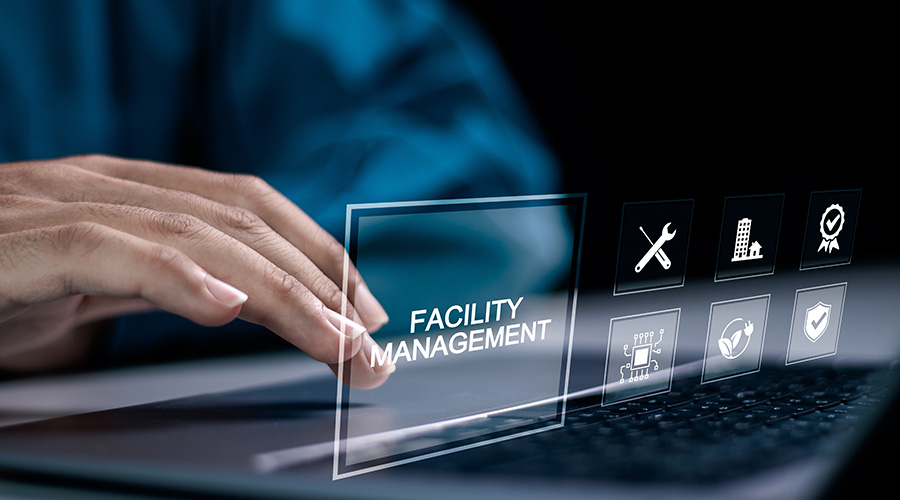How to Build a Long-Term Proactive Maintenance Plan
Using a CMMS and completed facility condition assessment, facility managers can begin to build long-term capital replacement and maintenance plans.
In the previous piece on how to change over a facility management operation from reactive to proactive, we discussed how to prioritize tasks, do needs analysis, and perform a facility condition assessment. Now let’s continue the tips with some more CMMS strategies, as well as how to build long-term maintenance and capital plans.
Step 4: Update CMMS or Set Up New One
With the FCA information gathered, you have a new, comprehensive asset inventory, and it is the perfect time to upload all that beautiful data into a CMMS. Most computerized maintenance management systems have a way to upload all your assets at one time or to bulk update existing assets from Excel. If you are updating an existing system, the asset name or ID in your FCA spreadsheet will have to be exactly the same as what is in the CMMS in order for the data to match up. Have your CMMS technical support team help with the process to make sure you don’t overwrite existing data or create mismatching problems.
Use Parent-Child relationships in the CMMS to set up your assets hierarchically. This may sound like common sense, but it seems that very often, systems are set up with built environment assets (BEAs) separated from unit assets (UAs). If you nest the UAs within the BEAs, requesters and system users alike will be able to find assets quickly and easily.
For example, a boiler is positioned under the parent asset of the room it is in, which is under the building floor parent asset, which is under the building parent asset, which is under the site parent asset. Something like, Site2>Building4>BasementLevel>MechanicalRm1>Boiler2. Most CMMSs will allow you to set this up in drop down menus that keep expanding the further you drill down. You can always use the search feature to find an asset if you’re not sure where it is located.
Make sure you have a CMMS with a robust mobile platform. If you are not using your CMMS on phones and tablets yet, you will want to give your team that capability as soon as possible. Doing so will streamline the flow of information and save an enormous amount of time. With many CMMSs you can even create and print a QR code to put on each asset. Scanning the code with your device will instantly bring up the asset in the system with all its associated information, including work order history, spare parts inventory, OEM manual, and anything else you may have saved to it. With mobile capability, you can even integrate building plans showing asset location, MEP/utilities, emergency response information, etc. This is a way that you can capture critical institutional knowledge from long time employees and share it at the touch of a screen.
Select a CMMS that allows you to add more layers of asset information than you think you need. That way you can store all the asset information you collected from the FCA in the CMMS. Otherwise, you will have to store some information in the CMMS and the rest in Excel, Access, or some other spreadsheet or database system. Keeping all the information matched up to the right asset, and up to date across two systems, can be incredibly difficult and messy — definitely avoid this.
Step 5: Create Preventive Maintenance Plan
Now that your assets are set up, it is time to create a preventive maintenance program in your CMMS. You already know preventive maintenance is crucial, especially with respect to the total cost of ownership of assets. If you created categories for each asset, as recommended during the FCA step, you can easily organize them to save time in creating PMs. Then write one general PM task for each type of UA and BEA, copy and paste to the corresponding assets within each category, and customize the PM name and steps as necessary.
Refer to OEM manuals and manufacturer’s instructions when writing PMs. As you do this, take the opportunity to start a spare parts inventory. If the OEMs don’t provide a spare parts list outright, refer to the troubleshooting guides to know what to expect and what to have on hand.
Step 6: Establish Reactive Maintenance Plan
No matter how good a maintenance program is, reactive maintenance can never be eliminated completely. A good rule of thumb is to target operating in the proactive/planned side of things 70 to 80 percent of the time and limit the reactivity to the remainder. Plan for the unplanned! Reserve at least 20 percent of your schedule open to be able to handle the unexpected. Decide how these tasks will be handled when they arise. What is the process flow for receiving a reactive work order? How will it be assigned, scheduled and prioritized (this can usually be automated in the CMMS)? Write a procedure to capture this process and then train your staff so that nothing falls through the cracks.
When your operation becomes too overwhelmed for you to keep up, due to a fixed amount of resources, reactivity becomes a trap that is almost impossible to avoid if you are unable to quickly add more resources. Once you claw your way out of this reactive hole with much difficulty, it is paramount to stay organized, proactive, and strategic to avoid slipping backwards. Track every work order and task in the CMMS and tag each one as planned or unplanned, proactive or reactive. Set up a dashboard in the CMMS to track this and make sure you are staying in the 70 to 80 percent range of proactive. Have a plan in place of how you will course correct when things start to slip below 70 percent.
Maintenance technicians should track total manhours spent on each task, whether it is a PM or any other kind or work order. Eighty percent is a good target here as well — around 80 percent of all manhours should be captured in the CMMS. After you have tracked this for a while, you can use the information in a number of important ways. You can use it to plan for future needs to have the correct amount of labor and the right skillsets based on manhours per category (i.e. you may need more plumbers and fewer electricians). You can calculate an average or median (use median if there are outliers that will throw the average off too much) number of manhours per work order. Calculate manhours per work order for an entire year and multiply it by the total number of work orders (including PMs) per year. Then use this number divided by 2,080 hours per year to calculate how many men and women you need on a given crew. This information can be game changing when requesting a labor budget increase. Having an accurately forecasted labor budget is essential to operating in a proactive way.
Step 7: Develop Capital Replacement Plan
By this step, you have your facilities operation running fairly smoothly and proactively. But it can only remain so for the short term if you don’t have a good capital replacement plan. This is where we get back to the FCA. In your FCA spreadsheet, use the Uniformat cost analysis system to classify each asset (sort them by categories to make it faster). Then, all the asset information can be uploaded into any commercially available capital planning and management system. With the asset information you’ve collected (Uniformat classification, age, condition rating, etc.), this type of system can estimate values of each asset, tell you when it will be most cost effective to replace it, what the replacement cost will be, and lots of other helpful information.
Review the information that is generated and make tweaks as needed to the timing or pricing of replacements that the computer doesn’t consider. This is now your Capital Replacement Plan. Export this Capital Replacement Plan to Excel. Also export all the asset information from your CMMS. Then copy and paste the asset valuations and replacement schedules into the asset spreadsheet and bulk update the assets in the CMMS. The Capital Replacement Plan is now integrated with the CMMS system and accessible for every asset. Create work orders for these replacements, staying about one year out ahead. Assign and schedule them so that they can be planned for, completed, and tracked like all other work.
The Capital Replacement Plan will identify assets that are past due for replacement. This information, combined with the work backlog you gathered in step one, can be used to generate a list of Deferred Maintenance – maintenance that should have been taken care of already, but was not due to lack of allocated resources, or other organizational reasons. This list, along with other factors, should be used in deciding the order of priority for capital replacements. It can also be used to calculate a Facility Condition Index score (FCI). This is a useful metric for assessing the overall condition of a property in relation to other properties using benchmarking data.
Josh Sylvester is director of facilities for Thanksgiving Point.
Related Topics:














